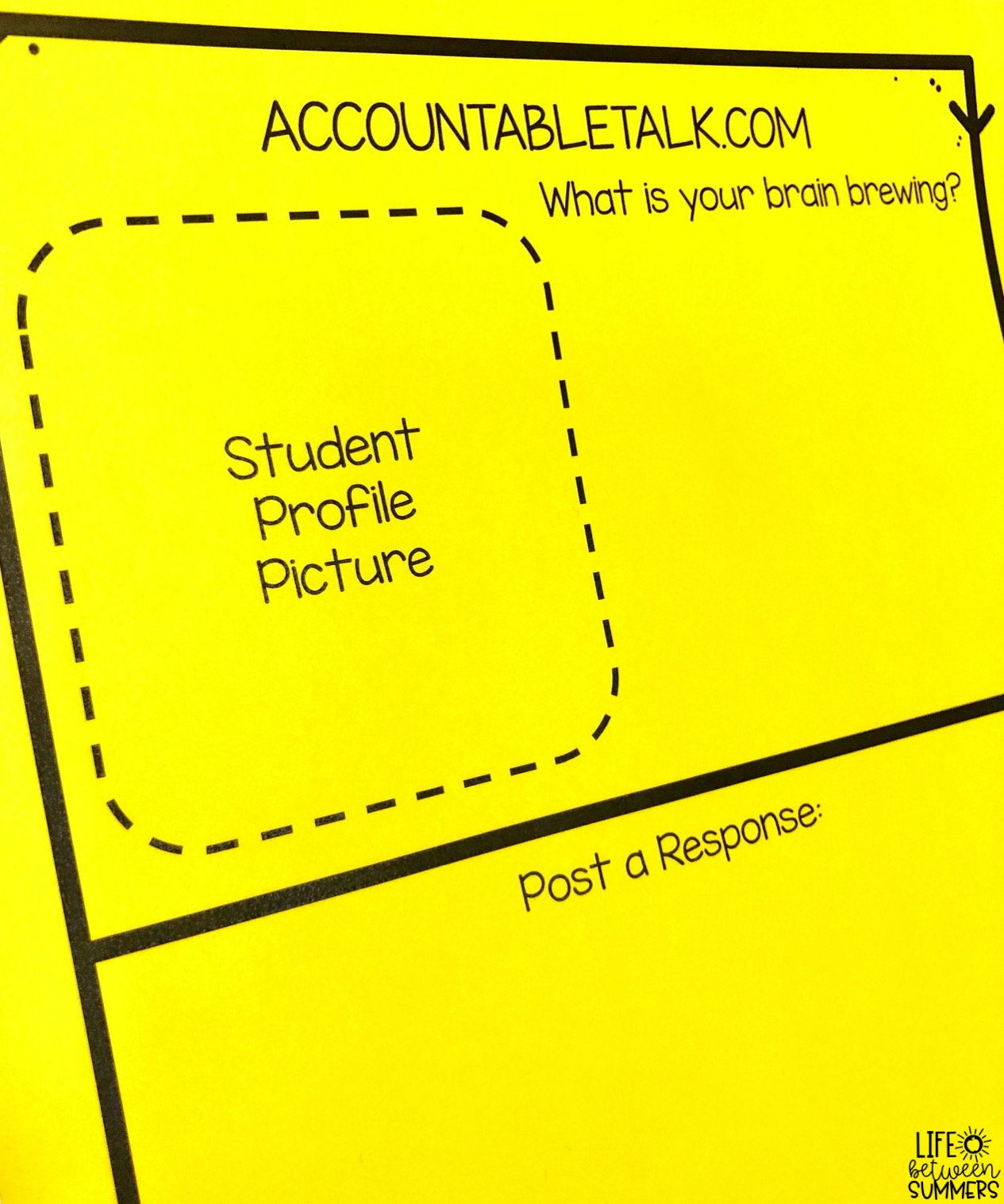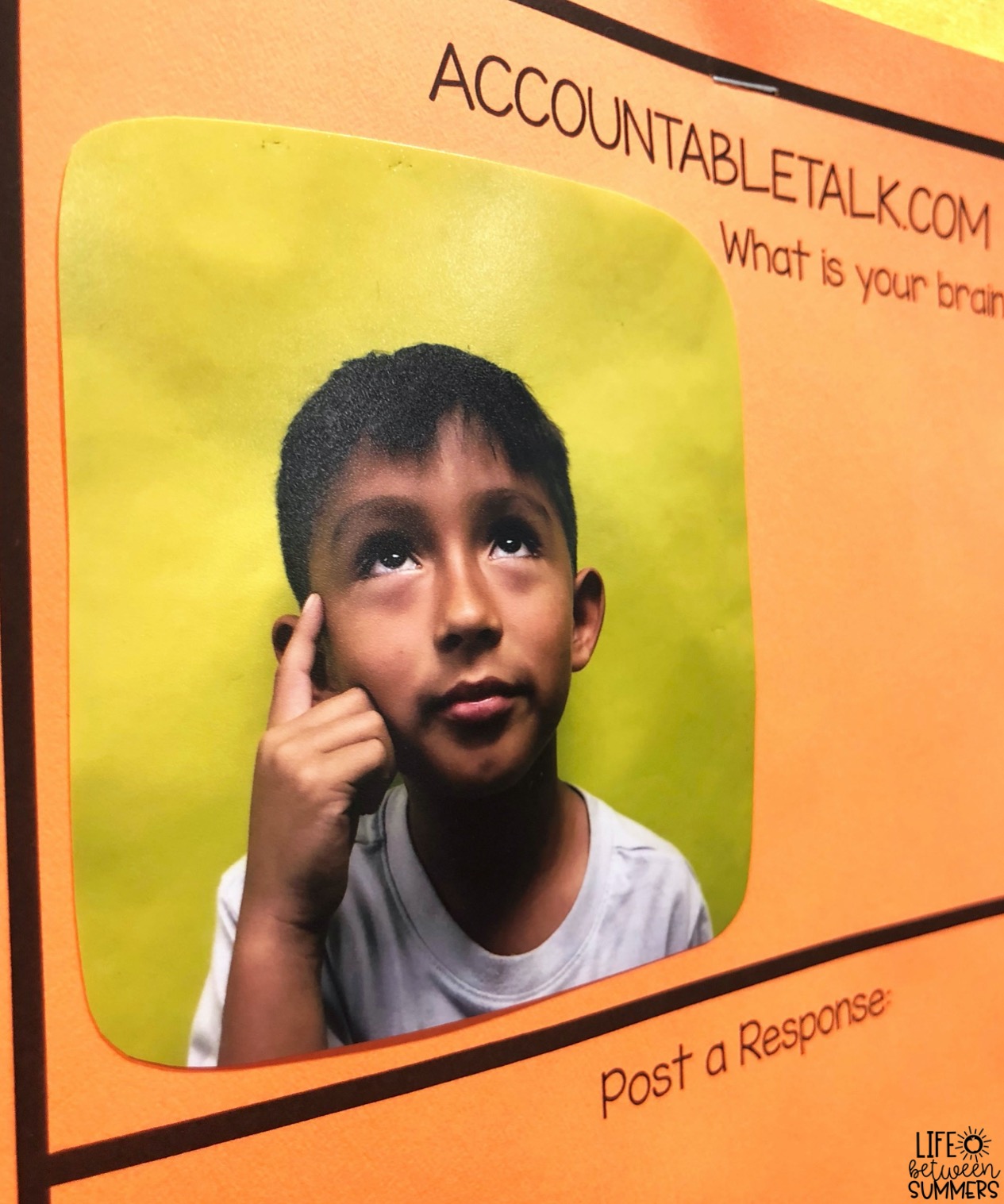In years of the past, a classroom full of on-task students may have been synonymous with a classroom full of quiet students. Not so much the case anymore. Active engagement in meaningful, standards-based learning doesn’t often look like students silently hunched over a desk as they concentrate on a worksheet. Kids make connections when they TALK with each other, share ideas, and analyze each other’s reasoning. “Accountable Talk” and “Collaborative Conversation” are buzz words that teachers are likely to hear at many a professional development training or staff meeting.
Creating this type of learning environment doesn’t happen seamlessly overnight. I’ve recognized with my own students that it’s an ongoing work in progress. It’s something that has to continue to be built with kids over time, and it definitely helps to have ready-to-go resources and strategies in your arsenal. Here are a few tried and true best practices to help create a class culture of collaborative communication (try saying that 5 times fast).
Accountable Talk Stems
If Accountable Talk is already a staple in your classroom, this one’s pretty obvious. It’s going to be difficult for kids to engage in academic conversation unless they know what it looks and sounds like. Visual reminders are key, whether it’s in the form of a poster on the wall, cheat sheets taped to desks, hand held cards, etc. Here are a couple of my favorite resources for Accountable Talk stems on Teachers Pay Teachers (and they’re freebies…score!)
Accountable Talk Stems by Leslie Ann
Conversation Starters by Miss Jacob’s Little Learners
I’m also a fan of this editable bulletin board:
Let’s Talk! EDITABLE Accountable Talk Bulletin Board by Cooties and Cuties
I keep it posted on the wall and it has served as a useful visual in my class. I like to change out the bubbles throughout the year as students master certain stems and are ready to try out new ones.
With more and more practice, these stems and starters have become a part of everyday language in our classroom discussions.
Collaborative Learning Groups
When students have a task to tackle, have students work together in collaborative teams. More heads can be better than one, particularly when it comes to answering higher level thinking reading comprehension questions and solving complex word problems in math.
In collaborative learning groups, each person has a specifically defined role, and each of the roles depend on one another. This helps encourage responsibility, accountability, and active participation from every member of the group.
I give each student a card with their job description:
Each team member takes turns performing their role in the group. I always display a poster of the sequence of job roles so that students have a visual reminder (I have one for reading and one for math).
It takes some modeling and practice in the beginning, but once the kids have it down, it’s amazing to witness the depth of the discussions that take place.
Here are a few of my kids working in their collaborative math groups. They were helping each other practice and review for their math test.
If you’re interested in trying these out with your students, the job cards and posters are available individually or together as a set. You can find them in the Life Between Summers shop and also on Teachers Pay Teachers.
Collaboration Groups for Reading Comprehension
Collaboration Groups for Math Problem Solving
Collaboration Groups: Reading and Math Bundle
Create a Hub
I have a designated spot in my classroom that is a “hub” for students to practice engaging in high level academic discourse. It’s an interactive bulletin board that resembles a social media site, which is aptly named “AccountableTalk.com.” It has become a hot spot in our classroom.
Here’s how it works.
I took a picture of each student making their best “thinking” face. This photo is their Student Profile Picture.
Whenever students come up with a question, idea, or thought that is related to what we are reading/writing/discussing, etc. in class, they can “post” their thinking on a sticky note underneath where it says “What is Your Brain Brewing?”
Here is a thought that one of my students had (we’re currently learning about plants in science). You’ll notice that I don’t edit spelling or punctuation for this particular activity, since the primary purpose is for them to just get their ideas out.
Throughout designated times of the day, students can read their other classmates’ posts, and they are able to “post” responses on sticky notes. A response can be a comment, an answer to a question, a question asking about the post, etc.
I provide opportunities for students to use their written discourse as jumping off points for verbal discussions with one another. I also choose a few posts to “feature” every so often and use them as starting points for whole class discussions.
Most times the subjects of the posts are driven by the students, but sometimes I present my students with a specific topic or question that relates to something we’re learning about (for example, “Measurement” or “How can characters in a story respond to challenges?”) Everyone posts what their brain is brewing about the topic, and it makes for great conversation starters when you partner up students or place them in small groups. I also like to do this when I’m about to introduce a new unit, as it helps me gauge their background knowledge.
If you’d like to create an interactive hub in your own classroom, click right here to find this resource in my shop, or it’s also in my TPT store.
Whether you’re just starting out with accountable talk in your class or whether you’re an old pro, hopefully you were able to find an idea or two to help get you inspired. What are your favorite ideas or resources for encouraging student collaboration? I’d love to hear them in the comments. Just as it’s important for our students to share ideas, teachers also learn best from each other. Tell me what your brain is brewing!














Thanks! I am always looking for different ways to make my students more accountable!
Shannon,
I love this! What a great way for students to remain in dialogue throughout the day and week!
Thanks for sharing!
Very well written and many helpful hints. I love to use sentence stems as conversation starters and also for writing sentences/paragraphs.